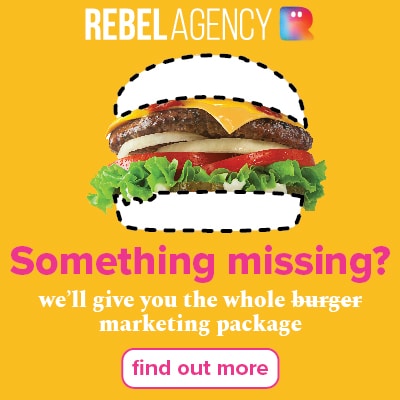As business owners, we all want more traffic to our website, In theory, a website that generates more traffic tends to have a bigger audience and the greater the audience or ‘traffic’ to the website, the greater its potential revenue stream becomes.
Having a website for your business is one of the most important tools in marketing your brand. Along with your Facebook page and your Google My Business page, your website is your most important digital storefront. The end goal is to drive all those virtual visitors-people that are interested in buying what you’re selling to your website.
So how do you go about drawing them in?
Generating more traffic to your online store or your website is a crucial part of growing your business. If you have a properly optimised site, getting a jump in traffic could mean more customers and more sales.
To help you increase traffic for your site, we’ve put together a list of 6 proven ways to generate more traffic to your digital storefront.
- Run paid campaign ads on Facebook
- Set up your Pixel – You are throwing your money away if you aren’t using Pixel. The Facebook Pixel is a snippet of code that gets placed on your website and lets you know what actions your website visitors (who have arrived there from your ad) are taking. Based on their behavior, you can then segment these visitors and retarget them separately.
- Set up your Custom Audiences – The first step to creating an audience is to choose your objective and define your audience criteria. You can define things like gender, age, geographic location, interests, behaviors, and employers. Things like your purchase behaviors, online buying habits, and things you search for or interact with online are easy to target in the Facebook ads manager. You will see an estimated audience size as you filter target criteria. These will give you projections of how many people you can reach given your specified criteria and budget. Remember to save your audiences for future ad campaigns! If they don’t work, you can always delete them later.
- Use A Multi-Product Carousel – Using Facebook’s carousel not only increases your ad click-through rate but also decreases your ad costs. Customers nowadays want to scroll through and see more products. These draw more people to your brand and engages them as our natural intrigue leads us to click and play with it. By showing groups of products that work together, you can have an option to tell a story or explain how multiple products interact. Customers might not immediately want to buy, but you can use the carousel to show them other options to give them a much bigger reason to click.
- Use video on your ad – Using video is much more likely to find its way onto people’s feed, aside from the fact that’s is more engaging as a format. Today’s customers are more likely to stop and watch a video as it instantly playing when they scroll over it. Every single day, more than half of daily Facebook users watch videos on the platform every single day.
- Stop selling! – Customers tend to tune out on blatant adverts. We are so used to seeing sales adverts online that we automatically ignore them. Yes, you’re right! Not every advert needs to be focused on sales. Instead, look for other ways to obtain value from your campaign ad. You can instead focus on building brand awareness or your events in the local area.
- Optimise your website SEO
- Use of content marketing to attract customers
- Be relevant and come up with a viral content – Prior to posting, you first need to understand why certain content goes viral while others don’t. It will become easier to adapt to what works once you figured this out. The more connected you are to your customers, the easier it will be to find engaging content. The days when all you needed to do was create content that appealed to Google alone are over. Your primary focus should be on your readers to remain relevant. Providing content that is valuable and emotionally driven and content that provides a benefit or perceived benefit for your audience is the key to success. Once you’re able to achieve this, your followers will help spread the word about your content.
- n-depth article writing – Content posting is not just about having a great promotion or campaign. Your campaign can engage the right audience, but if your content sucks it will fail! Your content must be epic in order to yield a positive result. You need the type of content that both Google and your potential customers will love, research your topic thoroughly and make sure to cover everything with precision and detail. Usually, this type of content has 2,000 words or more. Articles that contain 2,000 words or more tend to perform better on search engines according to serpIQ. Therefore, you will be able to attract more search traffic and social shares by continuously publishing irresistible and in-depth articles.
- Content sharing/distribution – As both offline and online worlds become more crowded, even the best content is useless if no one sees it. This is the reason why content distribution remains a vital component of every good content marketing strategy. You can maximise Facebook and Linkedin by joining groups or a community relevant to your business and share your content. By doing this on a regular basis, you’re not only building trust in your prospects but you’re building relationships as well. Always remember that people only trust people that they know and see on a regular basis.
- Set a clear goal – In content marketing, it’s very important to have clear conversion goals. The next step would be identifying what your target audience should perform after consuming the information or content you provided. The level of interaction or engagement with the targeted audiences varies, however, so it’s important before you start to know your conversion goal.
- Improve your website loading speed
- Work on your keywords
- Know how to leverage social media
When it comes to advertising, it’s undeniable that Facebook has a lot of ways of mixing things up and offering you the opportunity to try new strategies. But, it’s easy to miss the latest advertising tools and tips if you don’t follow the social network closely.
Running paid ads on Facebook is a fantastic way for business owners to get their products in front of a bigger audience, but what is more important is that you get your products in front of the right audience. You can get more clicks, more targeted customers, and more sales when it’s done correctly.
Here are the things to consider when running paid ads on Facebook
Related article: 5 ways to increase Facebook engagement
The big question you need to ask yourself is “Can my customers actually find me online?” “Do I really need SEO? What SEO can do for me?” You want your business to be, if not on top, at least on the first page of Google. Search Engine Optimisation or SEO is the process of fine-tuning your website to increase its chances of ranking highly in search results for relevant keywords. It’s the practice of increasing both the quality and quantity of website traffic, as well as exposure to your brand, through non-paid (also known as “organic”) search engine results.
It’s all about providing answers to users searching online. Paying attention to the words they are using and the type of content they wish to consume. If done right, SEO can pull your website on the first page and from that moment you will have a lot to gain; more traffic for your site, greater awareness and potentially more sales.
A best practice is to optimise your website on-page. This means working on your meta description, images with alt-description, keywords, and tags to increase the chances to attract more users on your website.
SEO also has other benefits too. It works free for you because it is live 24/7. Even when you’re sleeping, or you are offline, it can pull out your site and keep it in the sight of the visitors, because SEO never sleeps. Unlike a store, SEO doesn’t have open and closing hours. Which means it is open all the time and can receive the potential customer anytime.
Due to the fact that SEO can put your storefront on the map, it has a huge impact on the customers buying cycle. Without having to increase proportionally your promotional costs, the chance of having increased sales is high. And that’s what differentiates SEO from other forms of marketing and therefore adding value.
The best thing about SEO is you can have a no monetary investment approach. You’ll just have to put more effort into creating high-linkable content. Use high ranking keywords for your content and maximise the use of social media channels for sharing. But if you’re looking to scale your business on a much higher level, then you’ll have to make some investment.
With search engine optimisation you can push your marketing goals to give you a better ROI compared to other forms of marketing, turning your website into a prospect magnet.
Related article: 5 SEO improvement tips to increase organic search rankings
Content marketing is one of the most effective techniques to attract customers and has gained strength in recent years. Content marketing is gaining more importance as more companies realise the benefit of providing unique, quality content as a marketing strategy. Although with search engines like Google and Bing constant updates on their algorithms, quality content is still the priority of any company online.
Here are some hacks in content marketing to attract more customers
Related article: How To Stop Your Customers From Scrolling Past Your Content
All this time, Google has been telling us what exactly it’s algorithm is looking for. Spammy backlinks, keyword stuffing, and domain ownership are the factors gradually transformed into the Google criteria we know and follow today.
After the company began to perfect its search algorithm, one of the biggest determinants of a website value and ranking factor is the loading speed. Making it one of several necessities for optimisation. This is an absolute must for website owners who want to rank well because one of the main goals of Google is to please users. So they reward the fast loading websites and deny ranking privileges for the slow ones.
Fast loading websites can increase the chances that customers will stay on your website too. When your website loads fast, the chance of retaining viewers is high. One of the elements used by Google to determine which websites should receive the highest rankings is the average time spent by users on a website.
With the use of mobile devices outpacing desktops, your website loading speed must be reliable, no matter which device they use to gain access to your site. You need to ensure website loading speed is consistent across multiple devices.
By having a fast loading site, you avoid users exiting your site and going elsewhere.
Related article: Importance of a good website for business
Planning to write a blog? You should consider doing keyword research. The main way to increase the number of views that your blog will get is by choosing the right keywords.
A lot of marketers or bloggers struggle to get visitors on their blog no matter how hard they try. One of the reasons is that they don’t consider doing keyword research. Some bloggers are just simply putting the most popular keywords into their articles but don’t realise that by using common keywords they could be increasing traffic to their competition. It’s important to have a good keyword strategy for your page or blogs.
Keywords are an extension of your organic reach that allows you to attract readers with a genuine interest in what our blog has to offer. Organic traffic is the most valuable asset, not only for your blog but for your website too.
Related article: Tips on how to improve your local SEO listings
The more quality and engaging your content is, the more places you can share it and that means more traffic to your website. So take some time in creating engaging and quality content. When you share it across social media channels, the chance of getting backlinks and interested readers back to your site is high. Social media is as important as keywords are for blog posts. So it is wise to optimise your social media posts with #hashtags and descriptions to bring in more views, clicks, and shares.
Always remember that the purpose of search engines is to deliver relevant, meaningful search results that can answer the questions of your prospects and customers. Increasing website traffic or organic leads doesn’t happen overnight, but if you use these tactics and stay persistent and consistent, you can really get solid results.
Related article: 5 tips to keep your business relevant on social media




